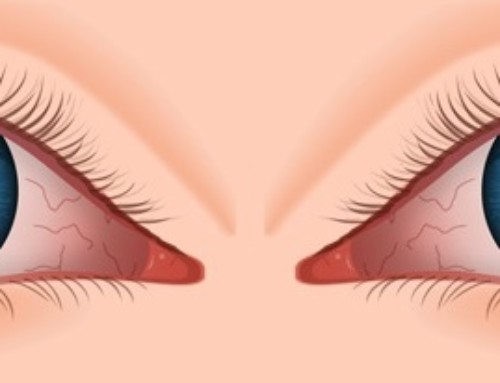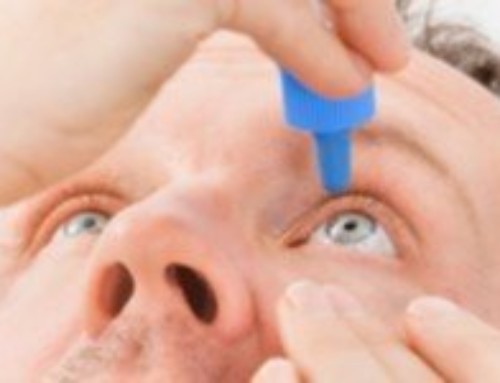What Causes Dry Eyes?
For patients with dry eye syndrome, their tear glands that moisturize the eye don’t produce enough tears, or their tears have a chemical composition that causes them to evaporate too quickly. Lacrimal glands are located above each eyeball and they continuously supply tear fluid that’s wiped across the surface of your eye each time you blink your eyelids. Excess fluid drains through the tear ducts into the nose. Your eyes are filled with tears, even if you aren’t crying. The following discussion is provided as a general overview of the causes, symptoms and treatment of dry eyes. If you are experiencing any of these symptoms or would like a complete evaluation, please contact Dr. Annie at 503-227-0573 or schedule a medical eye appointment here: EYE DEPARTMENT ONLINE SCHEDULE
Symptoms of dry eyes:
Typical signs and symptoms of dry eyes, which usually affect both eyes, may include:
- Blurriness
- Scratchy feeling eyes
- A stinging, burning or scratchy sensation in your eyes
- Stringy mucus in or around your eyes
- Sensitivity to light
- Eye redness
- A sensation of having something in your eyes
- Difficulty wearing contact lenses
- Difficulty with nighttime driving
- Watery eyes, which is the body’s response to the irritation of dry eyes
- Blurred vision or eye fatigue
Call Eye Department if you’ve had prolonged signs and symptoms of dry eyes, including red, irritated, tired or painful eyes. Portland Optometrist Annie Bacon can take steps to determine and treat what’s bothering your eyes.
Common Causes of dry eyes:
- Aging — Getting old happens. Dry eyes tend to be more common in women. During menopause, many patients report increased dry eyes.
- Side effects of certain medications and drugs like antihistamines, diuretics, decongestants, hormones replacement therapy and even some antidepressants and pain relievers.
- There are certain diseases that may affect your ability to make tears, like Sjogren’s syndrome, rheumatoid arthritis, and collagen vascular diseases
- Problems that don’t allow your eyelids to close the way they should.
- Post LASIK or PRK surgery may exacerbate signs and symptoms of dry eye.
- If you live in a dry, dusty or windy climate with low humidity. If your indoor air quality is highly regulated with low humidity, you may experience symptoms of dry eyes.
- Prolonged, excessive or heavy use of digital screens like iPads, iPhones, LCD Screens, gaming devices, etc… If you use multiple screens at your work station, you may experience signs and symptoms of dry eyes.
- Diet — What we put in our body affects our health. If we treat our bodies like an amusement park, we may experience mechanical failures from time to time.
Did you know that there are different types of tears?
| Category |
Types of Tears |
|---|---|
| Basal tears | In healthy human eyes, the cornea is continually kept wet and nourished by basal tears. They lubricate the eye, and help to keep it clear of dust. Tear fluid contains water, mucin, lipids, lysozyme, lactoferrin, lipocalin, lacritin, immunoglobulins, glucose, urea, sodium, and potassium. Some of the substances in lacrimal fluid (such as lysozyme) fight against bacterial infection as a part of the immune system. Lysozyme does this by dissolving a layer in the outer coating, called peptidoglycan, of certain bacteria. It is a typical body fluid with a salt content similar to blood plasma. Usually, in a 24-hour period, 0.75 to 1.1 grams (0.03–0.04 ounce avoirdupois) of tears is secreted; this rate slows with age.[3] In addition, the basal tears are composed of antioxidants such as Ascorbate, Urate, Cysteine, Glutathione, and Tyrosine. Ascorbate and Urate constitute half of the tears. |
| Reflex tears | The second type of tears results from irritation of the eye by foreign particles, or from the presence of irritant substances such as onion vapors, perfumes and other fragrances, tear gas, or pepper spray in the eye’s environment, including the cornea, conjunctiva, or nasal mucosa, which trigger TRP channels in the ophthalmic nerve.[5] It can also occur with bright light and hot or peppery stimuli to the tongue and mouth. It is also linked with vomiting, coughing and yawning.[3] These reflex tears attempt to wash out irritants that may have come into contact with the eye. |
| Crying or weeping (psychic tears) | The third category, in general, referred to as crying or weeping, is increased tearing due to strong emotional stress, pleasure, anger, suffering, mourning, or physical pain. This practice is not restricted to negative emotions; many people cry when extremely happy such as during times of intense humour and laughter. In humans, emotional tears can be accompanied by reddening of the face and sobbing — cough-like, convulsive breathing, sometimes involving spasms of the whole upper body. Tears brought about by emotions have a different chemical make-up than those for lubrication; emotional tears contain more of the protein-based hormones prolactin, adrenocorticotropic hormone, and Leu-enkephalin (a natural painkiller) than basal or reflex tears. The limbic system is involved in production of basic emotional drives, such as anger, fear, etc. The limbic system, to be specific, the hypothalamus, also has a degree of control over the autonomic system. The parasympathetic branch of the autonomic nervous system controls the lacrimal glands via the neurotransmitter acetylcholine through both the nicotinic and muscarinic receptors. When these receptors are activated, the lacrimal gland is stimulated to produce tears. |
https://en.wikipedia.org/wiki/Tears
How can I change my environment to facility healthy eyes?
Indoor air quality can play a serious factor in your eye health and comfort. For those with home or office air conditioning or a dry heating system, your eyes may become dry due to lack of humidity. Using a humidifier in your bedroom or home during evening hours may provide relief and time for your eyes to recharge. If you work on a computer or use multiple digital devices for extended periods of time, you may notice your eyes feeling tired and dry. This may be due to insufficient or incomplete blinking. If you spend more than 2 hours directly viewing your computer, you may have developed a reduced blink rate or insufficient blink rate to maintain appropriate tear levels. It is important to remember the 20-20-20 rule. Dr. Annie recommends all her patients to establish a 20 second gaze, 20 feet away every 20 minutes. By incorporating a forced change in vision, your eyes will have more opportunity to reduce strain and blink freely. Eye Department recently purchased several ASUS Eye Care LCD Monitors for the staff. The ASUS Eye Care computer monitor has an increased flicker rate to reduce eye strain. We’ve seen a noticeable difference from previous monitors.
What is in a tear?
- Water — Moisturizing your eyes
- Oils — Lubricating your eyes
- Mucus — Helps spread the tears across the eye during blinking
- Antibodies and Proteins — Protecting eyes from infection
Could my dry eyes be from
Dry eyes are also associated with certain systemic diseases such as lupus, rheumatoid arthritis, rosacea or Sjogren’s Syndrome (a triad of dry eyes, dry mouth, and rheumatoid arthritis or lupus).
Long-term contact lens wear, incomplete closure of the eyelids, eyelid disease and a deficiency of the tear-producing glands are other causes.
Dry eye syndrome is more common in women, possibly due to hormone fluctuations. Recent research suggests that smoking, too, can increase your risk of dry eye syndrome. Dry eye has also been associated with incomplete lid closure following blepharoplasty – a popular cosmetic surgery to eliminate droopy eyelids.






